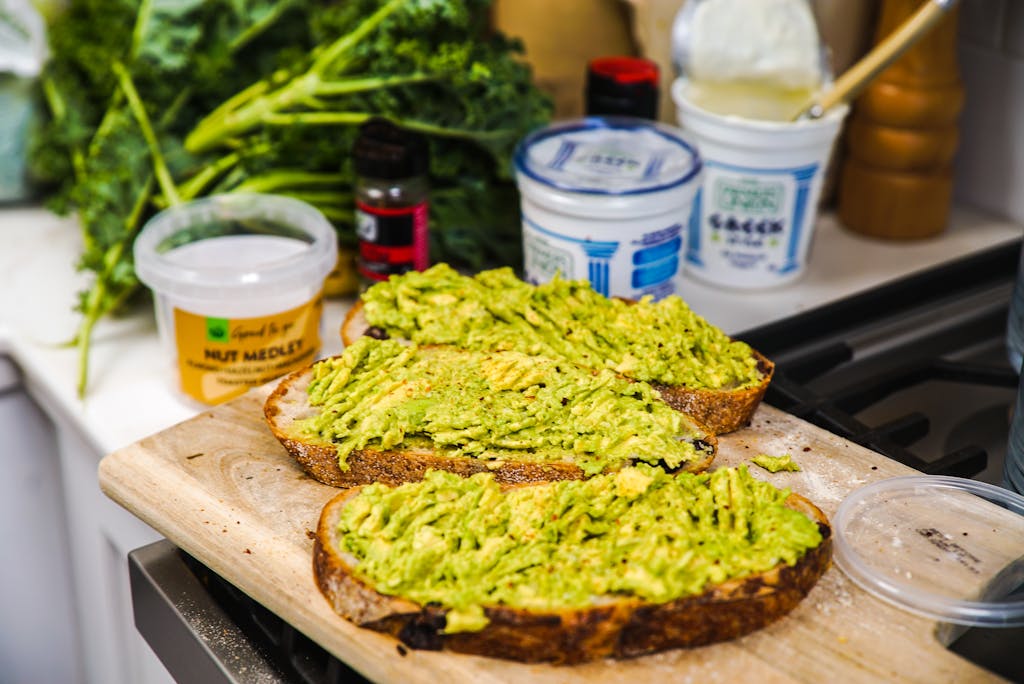FREE SHIPPING OVER $50
The 1 Dairy Food Doctors Recommend for Shrinking Dangerous Visceral Belly Fat After 40

It happens to almost everyone who crosses the 40-year mark: that persistent, uncomfortable layer around your middle that seems to defy every diet and workout. This isn’t just surface-level weight gain; it’s often a buildup of visceral belly fat, a dangerous type of fat stored deep within your abdomen, surrounding vital organs like the liver and intestines. Experts and doctors consistently warn that high levels of visceral fat pose significant risks, including an increased likelihood of heart disease, type 2 diabetes, and stroke.
Naturally, people search desperately for simple, effective dietary changes to combat this specific health threat. However, the path to losing visceral fat is often complicated by confusing and conflicting advice, especially when it comes to whole food groups like dairy. Surprisingly, the scientific consensus points toward one simple, delicious dairy food that can act as a powerful ally in your fight against abdominal obesity and help you shrink dangerous visceral belly fat after 40.
The Unexpected Fat-Burning Hero: Full-Fat Strained Yogurt
The single dairy food that doctors and nutritional experts frequently highlight for its potential to reduce visceral fat is full-fat strained yogurt, most commonly known as Greek yogurt.
If you’ve spent years following diet trends that demonize all fats, this recommendation might seem shocking. For a long time, conventional wisdom suggested that low-fat or fat-free versions were the only smart choices. However, recent research flips this idea on its head, suggesting that the unique combination of protein, healthy fats, and probiotics found in full-fat Greek yogurt makes it an exceptional tool for metabolic health and visceral fat loss.
This recommendation specifically focuses on strained yogurt—the thick, creamy kind—because the process of straining removes much of the whey, resulting in a product that delivers a massive concentration of protein and fewer natural sugars (lactose) than traditional yogurt. This nutrient density is the key to its powerful effects on your waistline, especially as your metabolism begins to slow down after 40.
Why Greek Yogurt is the Ultimate Visceral Fat Fighter
The ability of this dairy staple to burn visceral fat comes down to three major nutritional components working together: high protein, beneficial fats, and potent probiotics. Each element plays a crucial, distinct role in regulating the bodily functions most responsible for storing that deep, stubborn abdominal fat.
1. The High-Protein Advantage: Muscle and Satiety
The single most distinguishing feature of Greek yogurt is its protein content. A single cup of plain, full-fat strained yogurt can contain over 20 grams of protein. This massive protein punch directly supports weight loss and the reduction of abdominal obesity in several critical ways:
- Thermogenesis: Protein requires more energy (calories) for your body to digest, absorb, and metabolize compared to fats or carbohydrates. This effect, known as the thermic effect of food (TEF), means you are actively burning more calories simply by choosing a high-protein food.
- Sustained Fullness (Satiety): Greek yogurt contains a natural pairing of whey protein (quickly absorbed) and casein protein (slowly digested). This combination creates both immediate and sustained feelings of fullness. When you feel satiated, you naturally reduce overall calorie intake and minimize unhealthy snacking, which helps maintain the calorie deficit necessary for visceral fat loss.
- Muscle Maintenance: After age 40, maintaining muscle mass becomes challenging, and muscle is your body’s primary calorie-burning engine. The high protein in Greek yogurt provides the necessary building blocks to support and preserve calorie-burning lean muscle, preventing the age-related metabolic slowdown that often contributes to belly fat accumulation.
2. The Power of Full-Fat: CLA and Butyric Acid
Full-fat yogurt contains compounds like Conjugated Linoleic Acid (CLA) and butyric acid. CLA is a type of healthy fat that some studies link to improved body composition and an increased rate of fat burning. Butyric acid, a short-chain fatty acid (SCFA), is known to support gut health and may influence how the body stores and utilizes fat. Moreover, the healthy fats further enhance the feeling of satiety, reducing the likelihood of overeating. By slowing down digestion, the fat content further optimizes the appetite-curbing effects of the protein.
3. Probiotics and Gut Health: The Inner Battle Against Visceral Fat
The final, and perhaps most complex, piece of the puzzle lies in the live and active cultures, or probiotics, found in this fermented dairy food. Fermented products like yogurt and kefir are teeming with beneficial bacteria that radically influence your gut microbiome.
A growing body of scientific evidence suggests a strong link between a healthy gut microbiome and lower levels of visceral fat mass and reduced overall abdominal obesity. When the gut flora is healthy and balanced, it helps your body regulate inflammation, manage insulin sensitivity, and modulate appetite hormones.
- Reduced Inflammation: Visceral fat is often associated with chronic, low-grade inflammation throughout the body. Probiotics can help reduce this systemic inflammation, which is thought to be a driver of weight gain and fat storage, especially in the abdominal region.
- Hormonal Regulation: A balanced gut is crucial for optimal hormone function. Some bioactive peptides produced during yogurt fermentation may help lower levels of ghrelin (the hunger hormone) and increase levels of GLP-1 (a satiety and fat-burning hormone).
How Yogurt Consumption Affects Visceral Fat
Observational and clinical studies have consistently investigated the link between regular yogurt consumption and indicators of better metabolic health. The findings strongly support the recommendation of yogurt as a key component of a visceral fat loss diet.
A study found that individuals who were higher consumers of yogurt tended to have a lower visceral fat mass and a smaller waist circumference compared to non-consumers. Furthermore, a meta-analysis on the association between yogurt and obesity risk concluded that long-term intake of yogurt was linked to a lower risk of both overall obesity and abdominal obesity.
Another trial focused specifically on obese subjects following an energy-restricted diet. Those who included multiple servings of plain, low-fat yogurt daily achieved significantly greater improvements in BMI, waist circumference, and body fat percentage compared to those on the same diet without yogurt.
In short, the data shows that regularly eating this dairy product acts as a protective factor against the accumulation of that hard-to-lose deep belly fat, particularly for those in the 40-plus age bracket where hormonal and metabolic shifts are common.
Maximizing the Visceral Fat-Burning Potential
To truly leverage the power of full-fat strained yogurt for visceral fat reduction, you must select and consume it strategically. Not all yogurts are created equal, and some common habits can accidentally sabotage its benefits.
The Gold Standard: Plain, Unsweetened, Full-Fat
The number one rule is to choose plain, unsweetened varieties. Many flavored yogurts, even some marketed as “healthy,” contain staggering amounts of added sugar, which completely negates the fat-burning and anti-inflammatory benefits. Sugar, especially fructose, is a known contributor to liver fat accumulation and increased visceral belly fat.
- Avoid the Sugar Trap: Always check the nutrition label. Look for a yogurt with 0 grams of added sugar. The natural sugar (lactose) is already accounted for in the strained product and is not a concern.
- The Power of Full-Fat: Stick with the full-fat Greek yogurt. The fat is essential for providing satiety and delivering healthy, fat-soluble nutrients like vitamin A, D, and K2 (which plays a role in calcium metabolism and bone health).
Simple, Effective Meal Strategies
Incorporating this superfood into your daily routine is simple and effective. Aim for at least one cup (or around 170−200 grams) daily.
- High-Protein Breakfast: Start your day with a serving of full-fat Greek yogurt. Mix it with high-fiber ingredients like chia seeds, flax seeds, and a handful of berries. This creates a balanced, macro-friendly meal that manages blood sugar and keeps you full until lunch.
- Smart Snacking: Replace processed, high-sugar snacks with a small bowl of Greek yogurt. This is crucial for managing afternoon cravings and preventing the energy crashes that lead to unhealthy food choices. You can drizzle a small amount of honey or maple syrup (a tablespoon or less) for sweetness, or mix in some chopped nuts for a healthy crunch.
- Savory Swaps: Use plain Greek yogurt as a healthy, protein-rich substitute for sour cream, heavy cream, or mayonnaise in recipes. Use it to create tangy dips for vegetables or as a creamy base for salad dressings. This allows you to cut out less-healthy saturated fats and replace them with a fermented dairy product that actively supports your gut health and weight loss goals.
Conclusion
By consistently fueling your body with the right balance of high-protein dairy products, fiber, healthy fats, and supporting that with regular movement and stress control, you actively create an environment where dangerous visceral belly fat can be effectively melted away. Start your day with that bowl of plain, full-fat Greek yogurt, and take the first active step toward a healthier, smaller waistline.
Related Articles
- The 15 Morning Habits That Wreck Your Metabolism After 40—And What to Do Instead
- Allulose: The Sugar Swap Dietitians Say Could Help You Lose Weight Without the Crash
- Why Cooking From Scratch Helps You Lose More Fat—Even Without Cutting Calories
- The Surprising Dairy Food That Targets Belly Fat—Experts Say It Works Better Than You Think
- This Japanese Drink Is Going Viral—And Some Say It’s Outperforming Mounjaro for Fat Loss



